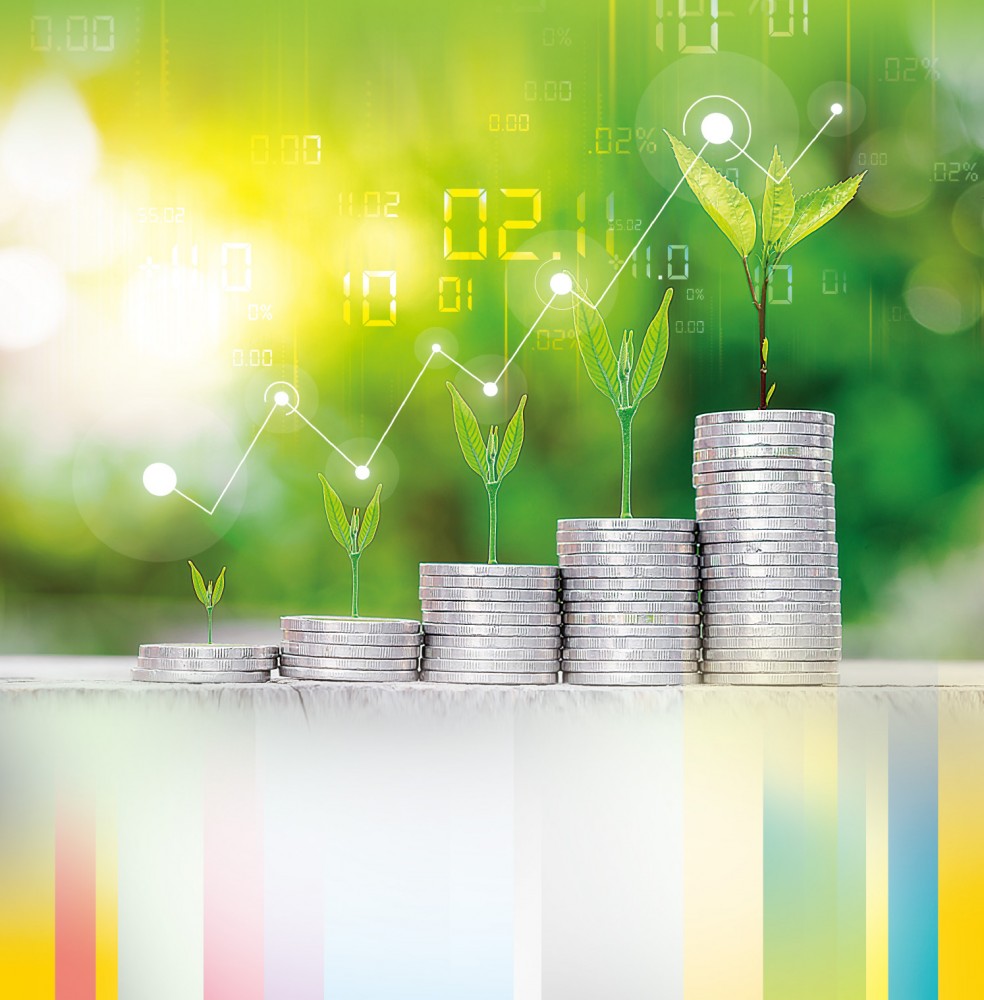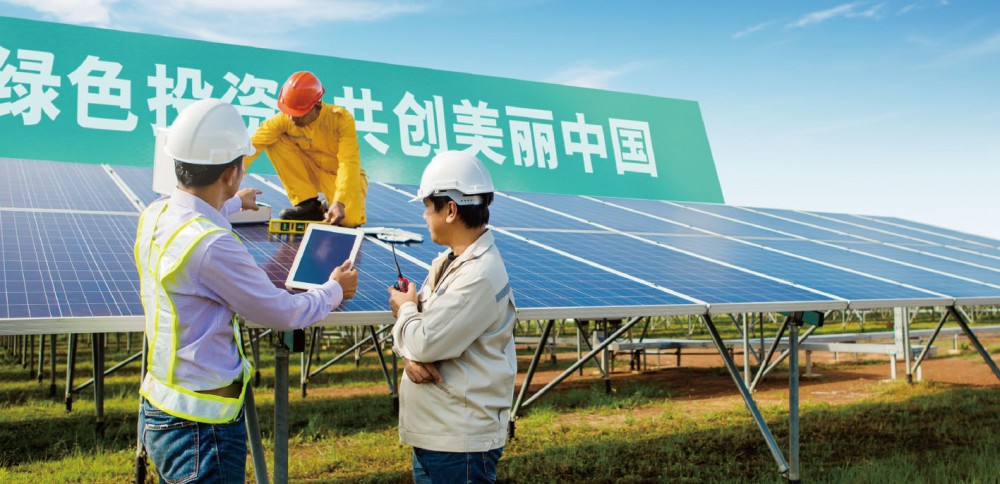In response to the common global challenge of climate change, many countries have pledged to reduce their carbon emissions and are actively driving the post-COVID-19 goal of “green recovery”. In China, green transformation is being implemented in all directions. The “14th Five Year” Plan, for example, will support Hong Kong to develop its signature financial industry and to establish a green financial hub in the Greater Bay Area.
Grace Hui: Hong Kong has the Potential to Become a Financing Centre for Green Finance

 Low-carbon transformation and green finance are inevitable mega trends. In this year’s government budget, a new green and sustainable grant scheme was announced. According to Grace Hui, Head of Green and Sustainable Finance of Hong Kong Exchanges and Clearing Limited (HKEX), although green finance in Hong Kong, and even the entire Asia, started late, it is booming by leaps and bounds every day.
Low-carbon transformation and green finance are inevitable mega trends. In this year’s government budget, a new green and sustainable grant scheme was announced. According to Grace Hui, Head of Green and Sustainable Finance of Hong Kong Exchanges and Clearing Limited (HKEX), although green finance in Hong Kong, and even the entire Asia, started late, it is booming by leaps and bounds every day.
Hong Kong green bonds growing with high speed
Locally, the green bond market has progressed from the embryonic stage to a phase of high-speed development over the past few years. Research shows that green bonds issued in Hong Kong exceeded the cumulative worth of USD 38 billion during 2015 to 2020. In 2020 alone, green bonds arranged and developed in Hong Kong amounted to USD 12 billion.
Speaking of the all-new Green and Sustainable Grant Scheme launched by the Hong Kong Monetary Authority, Hui said that the scheme helps to motivate more organizations to obtain financing for their green projects through the Hong Kong market. This could in turn assist companies in actualizing their green transformation and foster the development of more innovative green finance products. “The scheme is rolled out just in time. We can see new bonds listing on the HKEX, offering investors more options.”
STAGE - a green finance platform that covers a wide range of products
 To improve the transparency and circulation of Hong Kong’s green finance products (such as green bonds), the HKEX established Asia’s first sustainable and green exchange, the STAGE, at the end of 2020. Sixty-six product types are currently covered by the platform’s Product Repository.
To improve the transparency and circulation of Hong Kong’s green finance products (such as green bonds), the HKEX established Asia’s first sustainable and green exchange, the STAGE, at the end of 2020. Sixty-six product types are currently covered by the platform’s Product Repository.
Seeing that the green finance standards in China are gradually aligning with international ones, Hui believed the product coverage of STAGE will steadily expand to include more issuers from Hong Kong, the Mainland, as well as other regions; more product types will also be covered.
Strengthening ESG to drive development into financing centre
With local companies and organizations attaching more and more importance on ESG philosophies in their operations, related investment has become more popular. Records reveal that 50 Hong Kong organizations have signed the Principles for Responsible Investment, representing 1.5% of signatories around the world, or 44% within Asia (excluding China and Japan). Hui noted that, 16 of these organizations signed in 2019, and ten did so in 2020. The numbers suggest that Hong Kong’s ESG ecology is growing with a steady pace.
Hui noted that as ESG information disclosure plays a critical role in promoting green investment, the HKEX has been driving listed companies to enhance their ESG disclosure over the past few years. It has also revised and updated the Listing Rules; launched the guidelines and training on disclosure for ESG reporting; and encouraged listed companies to raise their ESG standard and to better deliver their social responsibilities. Investors are offered assistance in terms of informed investment decisions.
Hui reckoned that by formulating effective strategies, Hong Kong has what it takes to grow into a financial hub for green finance. It can assist projects that require investment to seek financing and offer financial services to the low-carbon transformation in China and in the Asia Pacific region. All these could help foster the realization of low-carbon transformation in the Hong Kong economy, cementing Hong Kong’s position as a regional green and sustainable financial hub.
Ma Jun: Mainland’s Accelerated Low-Carbon Transition Set to Bring Huge Green Finance Opportunities

Last year, President Xi Jinping announced that China will strive to achieve carbon neutrality by 2060, which is poised to not only help accelerate the Mainland’s green and low-carbon transition, but also lay an important foundation for a post-pandemic green recovery, while benefiting Hong Kong.
Ma Jun, Chairman of the Green Finance Committee of China Society for Finance and Banking (GFCCSFB) and Chairman and President of the Hong Kong Green Finance Association (HKGFA), said that the Mainland’s gradual move towards its goal of carbon neutrality will generate huge green investment needs and bring opportunities for the rapid growth of green finance businesses.
Eight financial areas for tapping into green business opportunities
 Citing banking as an example, Ma said that it will likely drive the development of financial products and services required to help the industry realize green business or low-carbon transition, such as loans for transition, etc. The Mainland will also roll out innovative green bond products, and in conjunction with improving the liquidity of the green bond market, attract foreign green investors to purchase and hold relevant bond products.
Citing banking as an example, Ma said that it will likely drive the development of financial products and services required to help the industry realize green business or low-carbon transition, such as loans for transition, etc. The Mainland will also roll out innovative green bond products, and in conjunction with improving the liquidity of the green bond market, attract foreign green investors to purchase and hold relevant bond products.
Regarding the development of green stocks, insurance and funds, Ma added that the Mainland is simplifying the IPO review and approval process for green companies. It is also studying the establishment of a green channel mechanism for green companies, whereby those with better operating results and prospects will be given priority to participate in the board-transfer pilot. “Meanwhile, the Mainland is devoting much efforts in developing innovative green financial products. It also encourages the establishment of green funds and transition funds to support equity investment in green and low-carbon industries to meet the needs of the energy and industrial sectors for financing transition.”
Low-carbon investments in the Mainland to reach hundred trillions of RMB
According to Ma, most of the hundred trillions of RMB in green and low-carbon investments required to achieve carbon neutrality must be obtained by mobilizing funds from the private sector through the financial system. “For example, Chongqing City will require an estimate of over RMB8 trillion in total low-carbon investments if it wants to achieve carbon neutrality in the next 30 years. Another example is that China will need to invest RMB70 trillion in seven areas such as renewable energy, energy efficiency, zero-carbon technology and energy storage technology under the vision of carbon neutrality, according to estimates made by the Investment Association of China and the Rocky Mountain Institute. It is therefore foreseeable that in the next decade, China would need more than RMB100 trillion in green and low-carbon investments to achieve carbon neutrality, bringing lots of development opportunities for green finance.”
Ma pointed out that as the real economy gradually transitions toward low carbon and zero carbon, the financial sector must work with it to not only meet the huge green and low-carbon investment or financing needs arising from the transition of the real economy, but also avoid various financial risks early, such as default risks and impairment risks in the high-carbon industries as well as systemic financial risks facing some high-carbon regions.
Consolidating carbon markets in Greater Bay Area to drive green finance in Hong Kong
China and several other countries and regions in Asia have pledged to achieve net zero emissions by 2050 or 2060. Ma believes that this is an important milestone in driving the global response to climate change and will likely contribute significantly to the demand for and supply of green finance in Hong Kong. He said that in view of this, the Hong Kong Green Finance Association has reorganized and set up new working groups and will continue to mobilize more resources to explore and help the Greater Bay Area develop carbon markets and consolidate resources for the benefit of the “9+2” cities, including Hong Kong.




